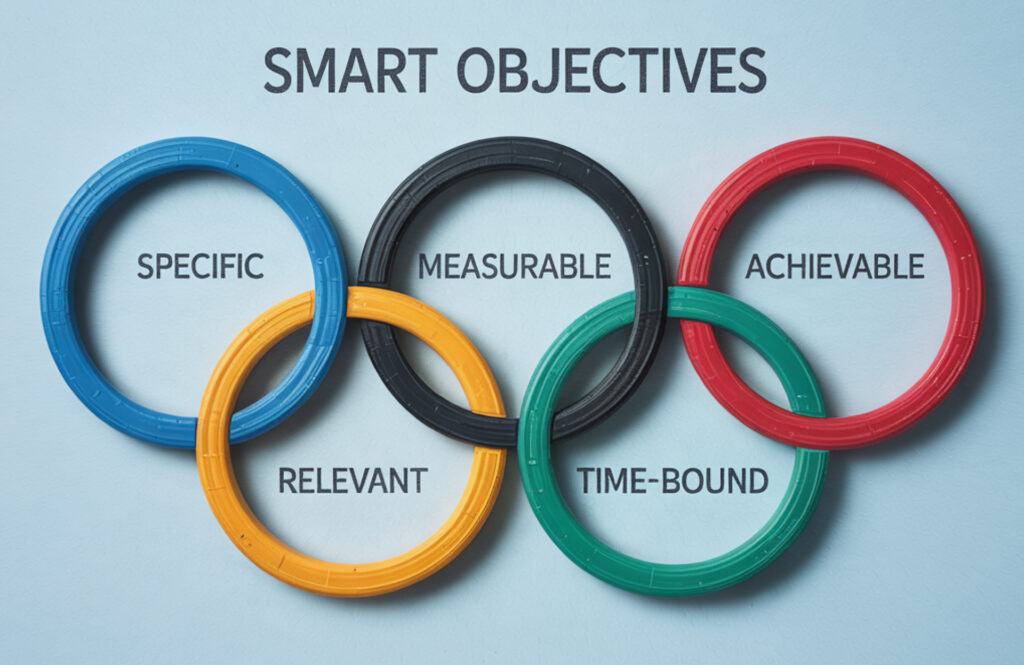Your cart is currently empty!

The Zen Marketing Framework
The Calm Path to Breakthrough Growth
You built your business through scrappy, DIY marketing that propelled your growth for years. But recently, you’ve noticed that your growth has stalled.
You open your laptop Monday morning to check how your marketing performed over the weekend. A flurry of activities greets you. Social posts went live, email campaigns hit inboxes, ads are running, and blog content is published.
There’s definitely activity. Lots of stuff is happening, but it’s not moving the needle like it used to.
The problem isn’t your effort. It’s that the methods that once drove your success now fuel the chaos. Most businesses aren’t breaking through the noise; they’re contributing to it. Every disconnected post, every random email blast, every ad that doesn’t align with your website message adds another layer to the chaos your customers are trying to navigate.
Marketing without strategy is like throwing darts in the dark. You might hit something, but you’ll never know what you were aiming for. And when consumers face 6,000-10,000 marketing messages daily, random activity gets lost in the shuffle.
But what if there was a different way? A calmer, more intentional approach that builds momentum instead of just motion?
That’s the heart of Zen Marketing. It’s about the mind, not the body. It’s thoughtful, strategic, and fundamentally outside-in.
Where traditional marketing asks, “What do we want to say?”, Zen Marketing asks, “What do our customers need to hear?” Where Bro marketing chases tactics, Zen Marketing invests in strategy first. Because, as we know from experience, projects don’t fail at the end. They fail at the beginning.
Strategy sets your direction by anchoring everything in customer truth. A plan built from the strategy amplifies your efforts by connecting every channel and touchpoint. Measurement guides your next move by revealing what actually drives growth. And testing gives Zen Marketing power steering.
This investment in strategic thinking, this shift from inside-out to outside-in, is what allows Zen Marketing to break through the noise and reignite the growth that brought you this far. And, with a unified Zen Marketing Framework, you empower your team to act decisively, without needing you to constantly steer the ship.
The framework ahead will show you how.
Zen Marketing Strives for Balance

What’s the Real Cost of Marketing Chaos?
- $30K down the drain, year after year.
- $2M annual revenue, $200K marketing spend, –15%+ lost to duplicated work, unclear direction, and wasted campaigns
- When you unify strategy and team focus, you reclaim those wasted dollars, and boost results.
- Aligning around clear objectives can deliver a 15% increase in marketing efficiency, unlocking up to $300K in new annual revenue. Every future campaign compounds that gain.
Clarity is a multiplier. Each step toward alignment increases ROI, saves you time, and accelerates growth.
When I audit marketing campaigns, I see the same patterns: businesses focus intensely on one area while neglecting the others. They’ll spend months fussing over their social media, but have no way to measure if it’s actually driving sales. Or they’ll obsess over analytics dashboards while their messaging speaks to no one in particular.
Marketing success rests on three essential legs that must work in harmony: Strategy (who and why), Plan (how and when), and Measurement (what’s working). The seat that unifies them all is a clear SMART objective that defines what success looks like.
Here’s the critical insight: all four elements must be present and strong when optimizing digital marketing. This isn’t about which comes first. It’s about balance.
The Strategy Leg: Who and Why
The strategy leg is understanding exactly who you’re serving and why they should care. This is the foundation most often missing or weak. When your strategy is vague (“busy professionals” or “small business owners”), your marketing becomes a spray-and-pray approach that burns through budgets without connecting with anyone specific.
Weak strategy manifests as irrelevant marketing tactics: social posts that generate crickets, email campaigns with dismal open rates, and ads that attract clicks but no conversions. You’re essentially marketing to personas that exist only in your imagination rather than real people with real problems.
Without a crystal-clear understanding of your ideal customer’s specific challenges, goals, and decision-making process, every other marketing effort becomes guesswork.
“Most customers don’t need more features. They need fewer headaches. They’re not asking you to impress them. They’re asking you to understand them. They’re overwhelmed, under-informed, and just trying not to feel stupid. So don’t overtalk it. Solve the problem. Make it easy. Make them feel smart.” ~ Ron Tite
The Plan Leg: How and When
Your plan outlines the tactics that bring your strategy to life, utilizing specific channels, timelines, and resource allocation.
When planning fails, great strategies never see proper execution. You might know exactly who you’re serving and why they should care, but without a systematic approach to reaching them consistently, your message gets lost.

The Measurement Leg: What’s Working
Measurement tells you whether your strategy and plan are actually working. Without it, you’re flying blind with no way to course-correct.
But here’s what’s crucial: measurement without the strategy and plan defaults to vanity metrics. Without the context provided by the strategy and plan, you’ll track what’s easy to measure (likes, shares, website visits) rather than what actually matters for your business.
The Unifying Seat: SMART Objectives

The SMART objective is what ties everything together. It gives your strategy focus, your plan direction, and your measurement meaning. It gives your marketing efforts clarity and focus. A SMART Objective is:
- Specific: Clearly defined outcome (increase qualified leads, not just “more leads”)
- Measurable: Quantifiable metrics you can track (50 new customers, $100K revenue)
- Achievable: Realistic given your resources and market conditions
- Relevant: Directly tied to your business goals and growth strategy
- Time-bound: A Clear deadline that creates urgency and accountability
Example: “Increase qualified leads by 40% within the next quarter through targeted content marketing, resulting in 25 new customers and $150K in additional revenue.”
Having a SMART objective is both very important and often overlooked. For more on crafting one for your business, read our post SMART Objectives for Effective Marketing.
Monday Morning Action: Is your quarterly marketing objective SMART, and is the entire executive team aligned with it?
Zen Marketing is Balanced
Think about trying to sit on a stool missing one leg, or one where a leg is significantly shorter than the others. It doesn’t matter how strong the other components are. The stool becomes unstable.
The same applies to your marketing. Each element must be developed and maintained with equal attention and care. When they’re in balance, they create a stable foundation for growth. When one part is neglected, the entire system falls over.
Most businesses I work with have at least one weak leg. The key is identifying which one needs strengthening and addressing it systematically rather than trying to fix everything at once. Job one is getting things balanced. Then we can optimize.
Monday Morning Action: Audit your current marketing against each leg. Rate your strategy clarity (1-10), planning effectiveness (1-10), and measurement quality (1-10). Is your objective SMART (1-10)? Start working on whichever scored lowest.
Understanding the foundation is crucial, but execution happens in motion. A balanced stool needs wheels to create momentum, which brings us to how your marketing channels should work together.
The Wheel: A System Powered by Connection
Your marketing isn’t a collection of separate activities. It’s a wheel in motion, gaining strength through structure and momentum through alignment.
Most businesses approach marketing like a checkbox exercise. “I’m told I need a website.” Check. “I should be on social media.” Check. “Email marketing is important.” Check. Each element gets built in isolation, often by different people with different priorities. In today’s noisy, competitive landscape, disconnected marketing isn’t just ineffective—it’s expensive.
The result? Marketing dissonance.
Think about music for a moment. A song with no dissonance feels flat and boring. But a song with nothing but dissonance becomes unlistenable noise. The magic happens when dissonance is used intentionally, creating tension that resolves beautifully.
Leonard Cohen’s “Hallelujah” uses a haunting minor fourth that creates just enough tension to make the resolution emotionally powerful. Without that carefully placed dissonance, the song would be forgettable. With it, the song becomes unforgettable.
Your marketing works the same way. When every channel tells exactly the same story in exactly the same way, it feels robotic and lifeless. But when every channel tells a completely different story, it creates chaos that repels prospects.
The goal isn’t perfect harmony. It’s intentional dissonance that creates interest while building toward a cohesive resolution.
The Hub: Your Website
Your website serves as the central command center where all value radiates from and customers return to. It’s both your marketing’s destination and its source.
As a destination, it’s where every marketing effort should ultimately drive traffic. Every social post, email, ad, and piece of content should guide prospects back to your website where they can learn more, engage deeper, and take meaningful action.
As a source, it’s where your value proposition lives and breathes. Your website houses the complete story of who you serve, how you help them, and why they should choose you. Every other channel draws from this central repository of value.
This dual role is especially critical given how modern consumers research before they buy. According to McKinsey research, more than half of millennials say they “almost always research before buying,” which is sharply higher than other cohorts. Your website must be ready to serve these self-directed researchers with the information they need to make confident decisions.
Every piece of content, every social post, every email should either drive traffic to your website or reinforce the value proposition established there. The hub anchors your entire system.
The Spokes: Your Channels
Your channels extend your reach by delivering value to your audience and provide a pathway back to the hub. Email, ads, social media, SEO, content marketing, partnerships. Each spoke reaches different audiences at different stages of the buying journey. For example, content that targets keywords with informational search intent attracts upper mid-funnel researchers. AdWords targeting keywords with Commercial and Transactional search intent attract low mid-funnel and decision-stage prospects.
But here’s what most businesses miss: the spokes aren’t just distribution channels. They’re amplification systems. Each should reinforce and strengthen the others.
The Rim: Your Messaging Strategy
Your messaging and content strategy hold everything together, ensuring consistent communication across all touchpoints. It’s the unified voice that makes a fragmented marketplace feel cohesive to your prospects.
Without the rim, the spokes and the hub become shiny things without much value. With the rim, they work in harmony and amplify the value.
How It Works in Practice
Let me show you how this plays out in the real world.
A fitness coach uses an entertaining “What’s Your Workout Personality?” quiz to attract prospects at the top of the funnel. The quiz is fun, shareable, and provides immediate value while capturing contact information.
The quiz results lead to targeted email sequences that educate and build trust in the middle of the funnel. Someone who scores as a “Strength Seeker” gets different content than a “Cardio Enthusiast.” The emails don’t pitch. They provide valuable insights based on the quiz results.
Paid remarketing ads reinforce the messaging to stay top-of-mind. These aren’t generic fitness ads. They speak directly to the workout personality revealed in the quiz, using the same language and addressing the same goals.
Finally, a comprehensive fitness assessment converts bottom-funnel prospects who are ready to invest in personalized coaching. The assessment builds on everything learned through the quiz and email sequence.
Notice how every element reinforces the others.
The quiz data informs email segmentation. Email content provides material for social posts. Ad creative mirrors the messaging prospects received via email. The assessment builds on trust established through the entire sequence.
Each touchpoint feels connected and intentional rather than random and opportunistic.
“We are here to awaken from our illusion of separateness.” – Thich Nhat Hanh (Buddhist/Zen teacher)
The Power Comes From the Connections
When your Instagram post reinforces your email message, which leads to a landing page that matches your ad copy, the entire system amplifies itself. Prospects don’t just see your message once. They experience it consistently across multiple channels, building familiarity and trust.
Disconnected tactics create wasted energy. Noise. Your ad budget fights against your content strategy. Your social media undermines your email campaigns. Every channel competes for attention instead of building toward a common goal.
Connected systems create momentum. Each channel strengthens the others. Your message becomes impossible to ignore not because it’s loud, but because it’s relevant to what the prospect needs, when they need it.
This is how you break through the noise without contributing to it.
Monday Morning Action: Map your current customer journey from first touchpoint to purchase. Determine the questions being asked and the obstacles to be overcome at each stage. Then, identify where your messaging feels disconnected or where prospects might get confused about your value proposition.
A connected system is powerful, but only if you can see where it’s working and where it isn’t. This is why measurement is your strategic compass, not just a reporting requirement.
Measurement: Your Marketing Compass

Measurement isn’t about generating pretty reports for monthly meetings. You can and should do this. But when used effectively, it’s a feedback loop you can use to optimize every aspect of your marketing. It’s the mechanism that tells you what’s gaining traction, where to refine, and when to let go.
I see measurement problems manifest in two equally damaging ways.
First, businesses drown in data while starving for insights. They track everything they can measure instead of measuring what actually matters. Website visits, social media impressions, and email open rates. These vanity metrics might make you feel productive, lots of charts and graphs for meetings, but they don’t pay the bills.
Second, and perhaps even more common, businesses operate with no measurement at all. They make decisions based on gut feelings, assumptions, or the loudest voice in the room.
This pattern plays out consistently across industries. E-commerce brands obsess over traffic while ignoring cart abandonment rates. SaaS companies celebrate demo requests but can’t track which lead sources produce paying customers. Professional services firms count LinkedIn connections while their pipeline stays empty.
The stakes are higher than ever in 2025. Digital advertising costs continue climbing, customer acquisition is more difficult, and the margin for error keeps shrinking. Perhaps most critically, your buyers have fundamentally changed. The marketing tactics that worked on Boomers actively repel Millennials and Gen Z, who now dominate purchasing decisions. You can’t afford to guess what’s working, especially when your assumptions about what works and what doesn’t are built for a different generation.
Just this week, a client called our marketing director and told her that he was ready to quit LinkedIn entirely.
“It’s not working,” he said. “I want to stop posting and focus somewhere else.”
“Let’s look at the data first,” she replied.
When he saw what was actually happening, the conversation changed completely. LinkedIn was generating qualified leads and meaningful engagement. YouTube, where he thought he was gaining traction and spending the most, was delivering virtually nothing. He decided to double down on LinkedIn and cancel YouTube instead.
Without measurement, he would have killed his best-performing channel and doubled down on his worst.
Good measurement must go beyond vanity metrics to focus on business outcomes. Instead of celebrating social media likes or email open rates, track metrics that directly impact your bottom line.
Metrics That Matter
The following metrics drive strategic decisions and work together to tell the complete story about your marketing.
| Metric | What It Means | Why It Matters |
| Cost Per Acquisition (CPA) | What it cost to acquire a new customer | Identifies which channels deliver profitable growth and which ones burn through budget without results |
| Average Order Value (AOV) | Average revenue per transaction | Reveals whether your marketing attracts high-value customers or bargain hunters |
| Customer Lifetime Value (LTV) | The total revenue a customer generates over their time with you | Shows the long-term impact of your acquisition efforts and justifies higher CPAs for valuable customers |
| Return on Ad Spend (ROAS) | How much revenue was generated from your advertising spend | Measures immediate campaign effectiveness—a 3:1 ROAS means you’re making $3 for every $1 spent |
How They Work Together
These metrics become powerful when you understand their relationships. Your LTV-to-CPA ratio determines sustainable growth: if a customer is worth $1,000 over their lifetime, you can afford a $200 CPA and still be profitable. AOV affects both LTV (higher-value customers often buy more frequently) and ROAS (higher order values improve campaign returns).
And there’s a practical application. These metrics will help you optimize your marketing plan. Low ROAS? Test different audiences, creatives, or offers. High CPA but strong LTV? You can afford to scale that channel. Declining AOV? Your messaging might be attracting price-sensitive customers instead of ideal clients.
The Measurement Mindset
“The path is the goal.” ~ Zen saying
You don’t need to track every possible metric. You need to track the metrics that matter. The four I’ve described are a great place to start. Use them to make informed decisions about where to focus your efforts.
Think of measurement like a GPS system. You don’t need to know every street in the city. You just need to know where you are, where you’re going, and whether you’re getting closer to your destination.
Data provides clarity and reduces guesswork. Instead of wondering whether your latest campaign worked, you know. Instead of debating which direction to go next, the numbers point the way. A data-driven marketer lets the data, not emotion, guide their decisions.
Measurement transforms marketing from a creative gamble into a strategic advantage.
Monday Morning Action: Pick three metrics that directly connect to revenue in your business. Set up proper tracking for these metrics and ignore everything else for the next 30 days. Let clarity replace complexity.
Good measurement tells you what’s working, but it doesn’t tell you how to make it work better. That’s where systematic testing becomes your power steering.
Testing Adds Power Steering to Zen Marketing
Testing is how you make small, confident adjustments instead of dramatic course corrections. It’s not a one-off tactic but an ongoing discipline that keeps your marketing responsive and efficient.
Yet most business owners avoid testing like it’s calculus homework. They see the complexity of modern digital marketing and assume testing must be equally complex. But here’s the hidden truth: digital’s perceived complexity makes testing easier, not harder.
Think about it. In the pre-digital era, testing meant printing different versions of a direct mail piece, mailing to separate lists, and waiting weeks for responses. One test could cost thousands and take months to complete.
Today? You can test two email subject lines in an hour for free. Landing page variations can be live in minutes. Ad creative tests run automatically while you sleep. Digital’s responsiveness and low cost have democratized testing in ways previous generations of marketers could never imagine.
The complexity that intimidates you is the same complexity that makes rapid, affordable testing possible. Whether you’re optimizing conversion rates for an online store, improving lead quality for a consultancy, or increasing event registrations for a local business, the digital tools are there, waiting to be used.
These perceived barriers are myths that cost businesses millions in missed opportunities.
As conversion optimization expert Avinash Kaushik puts it: “Testing is the biggest no-brainer, and the killer of most stupid ideas.”
When I managed a digital budget for Toyota, the media team was fixated on 1% to 2% improvements in their ad performance. I asked if they’d done any testing on the landing pages people saw after clicking those ads.
They hadn’t.
We used A/B split testing to refine the campaign landing pages and saw greater than 50% improvement in conversion rates. The media team had been optimizing what they controlled—ad performance. Strategic thinking revealed that the bigger opportunity lay where ads became customers.
That’s the power of testing. It lets you improve what matters.
With measurement, you can discover what matters this month, with this audience, in this market. While they debate which approach might be better, with testing, you’ll know which approach is better. This one-two punch is not just an operational advantage; it’s a defensive moat that widens every time you measure and test, and they don’t.
So, the question you should be asking yourself isn’t whether you should measure and test, it’s whether you’ll claim this advantage before your competition figures it out.
Common Myths About Testing
Let me address the misconceptions head-on…
| Myth | Reality |
|---|---|
| “Testing is expensive and complex.” | Simple A/B tests can be run with free tools like Google Optimize or built-in features in most email platforms. You’re probably already paying for testing capabilities and not using them. |
| “Testing takes too long to deliver results.” | Many tests show statistically significant results within days and rarely more than 2-4 weeks. The insights compound over time, making every future decision more informed. |
| “My audience is too small to test.” | Even audiences of a few hundred can provide meaningful data when testing significant changes. You don’t need Amazon’s traffic to improve your conversion rates. |
While your competitors remain paralyzed by perceived complexity, you can be running tests, gathering insights, and optimizing performance. Most businesses in your market aren’t testing systematically, if at all. They’re making decisions based on assumptions, industry best practices, or what worked last year.
Are you ready to start testing?
We’ve covered the strategic importance and competitive advantage, but implementation details matter. For a complete guide to setting up effective tests, read our comprehensive posts on split testing fundamentals and campaign testing best practices.
The key is to start simple and focus on big things that actually move the needle. Your competitors aren’t testing systematically. That’s your opportunity.
Monday Morning Action: Identify one marketing element that directly impacts your revenue (email subject line, landing page headline, or ad copy). Create two versions and test them this week. Start simple, but start now.
Even the best frameworks and testing protocols can derail during execution. Knowing what to avoid is as important as knowing what to do.
A Zen Marketing Case Study
A Niche Cosmetics Brand
(The following is based on the results from a real client. Only the identifying characteristics have been changed.)
Niche Cosmetics, a small but ambitious cosmetics e-commerce brand targeting seven-figure annual sales, faced the classic problem: scattered effort with inconsistent results. They were posting, emailing, and advertising, but nothing connected.
Worse, their marketing was inside-out. They talked passionately about their organic ingredients and artisanal processes while their audience was searching for solutions to skin problems and wellness concerns. The disconnect was costing them customers who couldn’t see how beautiful botanicals solved their real-world needs.
The Challenge
Before working with Inn8ly, Niche Cosmetics’ marketing looked busy from the outside. Regular social media posts showcasing ingredient sourcing. Email newsletters describing their sustainable practices. Google Ads highlighting its natural formulations.
But the metrics told a different story. Website conversion rates hovered around 1.2%. Email open rates stayed below 15%. Their cost per acquisition was climbing while lifetime customer value remained flat.
The problem wasn’t their products. Niche Cosmetics made exceptional products. The problem was their message.
They were marketing from their perspective, not their customers’. They celebrated what made them proud instead of addressing what kept their customers worried.
The Transformation
The shift began with clarity, not creativity. We started by building a detailed customer avatar and journey map that revealed a critical insight: Niche Cormatics’ customers weren’t ingredient enthusiasts. They were busy professionals dealing with stress-related skin issues who wanted simple, effective solutions.
This revelation changed everything:
Flipped the messaging from inside-out to outside-in. Instead of leading with “organic botanical extracts,” we started with “clear, calm skin in 30 days.” Instead of showcasing the lab, we showcased the results.
Aligned all content and messaging around their ideal customer’s actual concerns. Blog posts shifted from ingredient deep-dives to solving specific skin problems. Social media moved from behind-the-scenes content to before-and-after transformations.
Connected measurement to actual business outcomes. We stopped tracking vanity metrics and focused on conversion rates, customer acquisition costs, and lifetime value.
Implemented systematic testing of key elements. We tested different value propositions, refined email subject lines, and optimized landing pages based on customer language rather than company jargon.
Created connected campaigns that reinforced each other. A blog post about stress-related breakouts linked to an email sequence about skin-calming routines, which connected to targeted ads for their stress-relief serum.
The Results
The numbers spoke for themselves:
- Sales increased 280%
- Website traffic grew 251%
- Social engagement improved 57%
- Email open rates jumped from 15% to 32%
- Conversion rates increased from 1.2% to 3.8%
But the real transformation was deeper than metrics. Niche Cormetics stopped competing on ingredients, which likely supported their major competitor’s positioning, and started winning on outcomes. They moved from being one of many natural skincare brands to being the solution for busy professionals with stress-related skin concerns.
The Key Insight
The shift didn’t come from doing more. It came from doing less, but with greater intention and connection. Most importantly, it came from speaking their customers’ language, rather than their own.
Niche Cormetics learned what every successful business discovers: marketing isn’t about what you want to say; it’s about what your customers need to hear.
With Zen Marketing, Intention Is the Difference Between Motion and Momentum
“Before enlightenment, chop wood, carry water. After enlightenment, chop wood, carry water.” ~ Zen proverb
In a world of marketing chaos, intention creates clarity. Strategy sets your direction, structure makes your system strong, and measurement keeps you on course.
The truth is simple: small, data-informed adjustments consistently outperform sweeping changes. The businesses that thrive aren’t the ones making the most noise. They’re the ones communicating with purpose.
Marketing that works is focused, consistent, and intentional. It’s Zen Marketing: calm in approach, powerful in execution, and sustainable in growth.
Start today. Conduct a quick audit of your current marketing. Are your tactics intentional or reactive? Ask yourself:
- Do I have a clear strategy defining exactly who I serve and why they should care?
- Are my marketing channels working together or in isolation?
- Am I measuring what matters or just what’s easy to track?
If you answered “no” to any of these questions, you’re not alone. But you now have a framework to change that.
The path to breakthrough marketing isn’t through more activity. It’s through more intention. Start with strategy. Build with structure. Steer with data.
Are you ready to transform your marketing from chaotic to intentional?
Take our Zen Marketing Self-Assessment to discover exactly where your marketing needs clarity and connection. In 5 minutes, you’ll know which leg of your stool needs strengthening first.
Your customers are waiting for clarity in the chaos. Give them a reason to choose you, not just notice you.
Related Posts
-
Why You Need a Brand Kit.
Discover why a brand kit is key for keeping your business looking polished and profesional across all digital marketing channels.
-
Zen Marketing
A thoughtful approach to marketing that brings value to your audience and your business.
-
Marketing Strategy Mistakes to Avoid
Discover the 12 common marketing strategy mistakes that can hinder growth.
Author: James Hipkin
Since 2010, James Hipkin has built his clients’ businesses with digital marketing. Today, James is passionate about websites and helping the rest of us understand online marketing. His customers value his jargon-free, common-sense approach. “James explains the ins and outs of digital marketing in ways that make sense.”
Use this link to book a meeting time with James.

